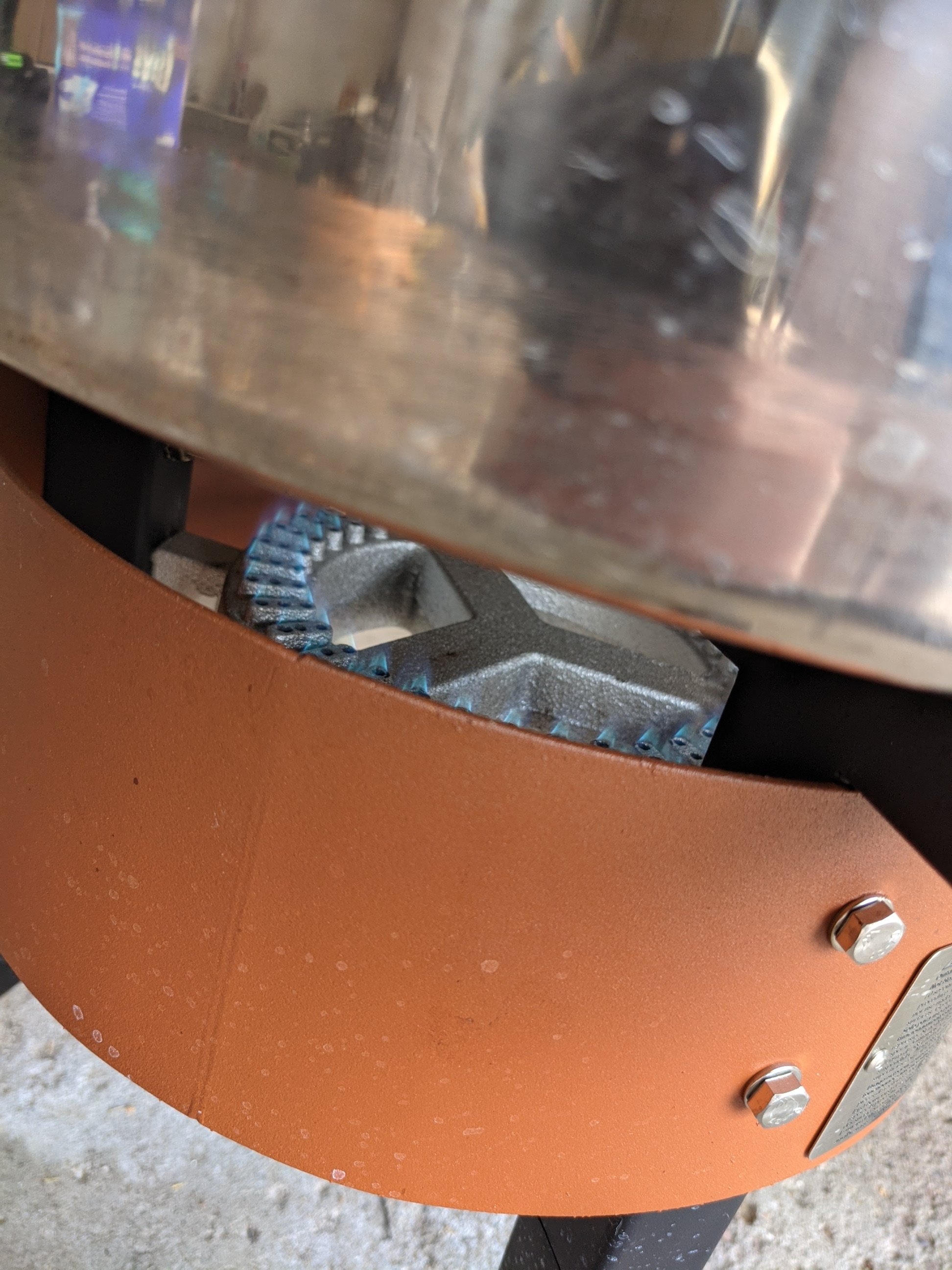Today was my first attempt at brewing after a winter hiatus. I had trouble with my burner, though (I think it's this one, but it looks like there are a couple models that look a lot alike). It didn't want to stay lit. At first I thought it was just because my part of the world was windy, but when I moved into the garage I cranked it up, got it to stay lit, but this was the best it could do:

Despite leaving 5 gallons of wort on that burner for a couple of hours, it never really boiled.
This is a fairly new burner (last year) that I used successfully a few times. Those times the burner had much more impressive flames that I could hear and I had to turn down. Today I had it on full blast and the flame was hardly noticeable.
Any idea what happened? Any recommendations for how to get it working properly?

Despite leaving 5 gallons of wort on that burner for a couple of hours, it never really boiled.
This is a fairly new burner (last year) that I used successfully a few times. Those times the burner had much more impressive flames that I could hear and I had to turn down. Today I had it on full blast and the flame was hardly noticeable.
Any idea what happened? Any recommendations for how to get it working properly?









































![Craft A Brew - Safale BE-256 Yeast - Fermentis - Belgian Ale Dry Yeast - For Belgian & Strong Ales - Ingredients for Home Brewing - Beer Making Supplies - [3 Pack]](https://m.media-amazon.com/images/I/51bcKEwQmWL._SL500_.jpg)

















